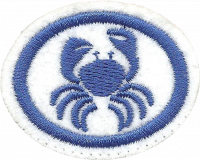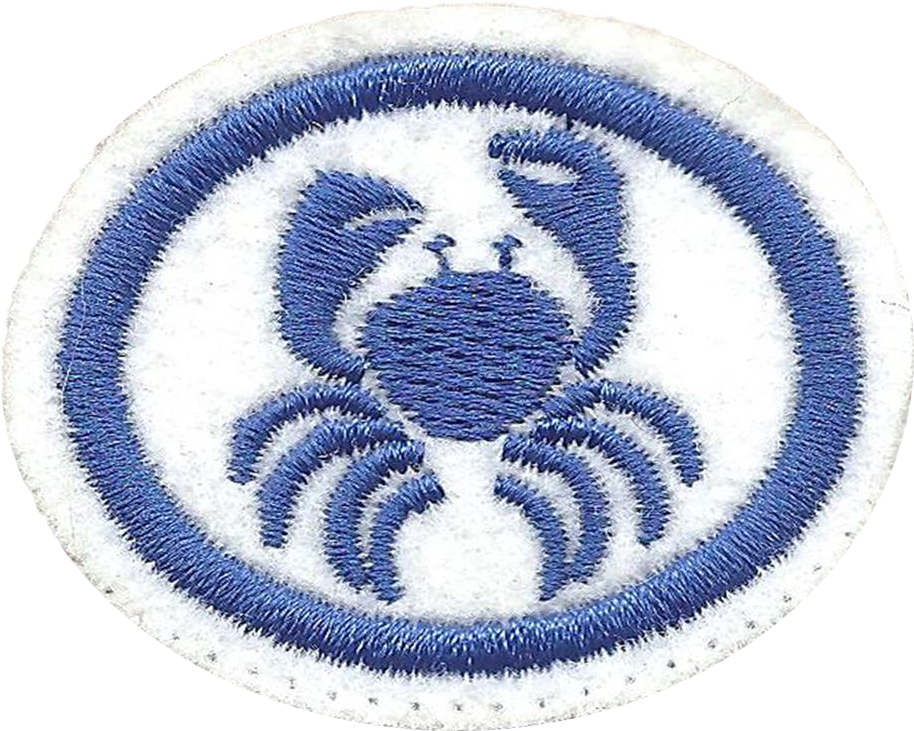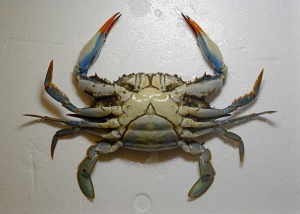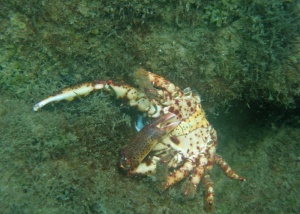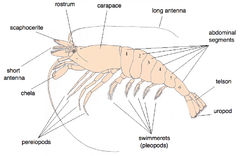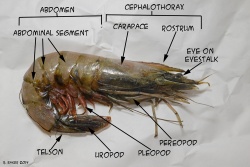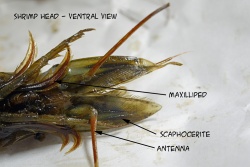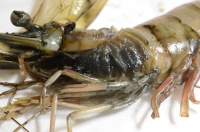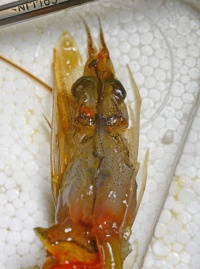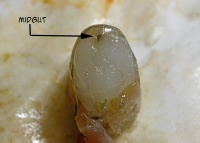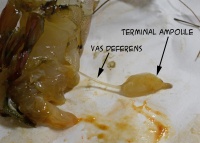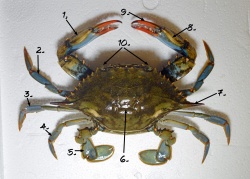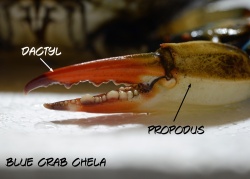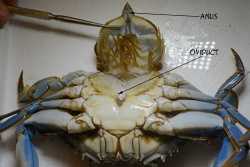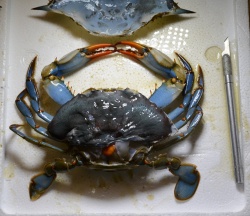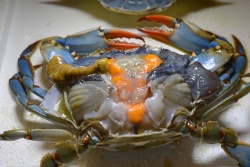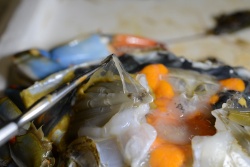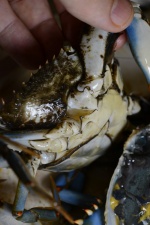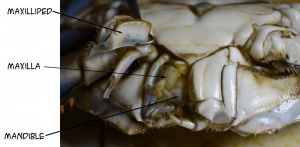Difference between revisions of "AY Honors/Crustaceans/Answer Key/pt-br"
From Pathfinder Wiki
< AY Honors | CrustaceansAY Honors/Crustaceans/Answer Key/pt-br
(Created page with "{{clear}}") |
(Created page with "</noinclude> <!-- 11. Ser capaz de identificar, pessoalmente ou através de imagens, os seguintes animais: -->") |
||
| (13 intermediate revisions by 2 users not shown) | |||
| Line 2: | Line 2: | ||
<section begin="Body" /> | <section begin="Body" /> | ||
{{ansreq|page={{#titleparts:{{PAGENAME}}|2|1}}|num=1}} | {{ansreq|page={{#titleparts:{{PAGENAME}}|2|1}}|num=1}} | ||
| − | <noinclude> | + | <noinclude></noinclude> |
| − | </noinclude> | + | <!-- 1. 1. Citar, pelo menos, 4 características de um crustáceo. --> |
| − | <!-- 1. | ||
| − | |||
{{clear}} | {{clear}} | ||
| Line 26: | Line 24: | ||
{{CloseReq}} <!-- 1 --> | {{CloseReq}} <!-- 1 --> | ||
{{ansreq|page={{#titleparts:{{PAGENAME}}|2|1}}|num=2}} | {{ansreq|page={{#titleparts:{{PAGENAME}}|2|1}}|num=2}} | ||
| − | <noinclude> | + | <noinclude></noinclude> |
| − | </noinclude> | + | <!-- 2. O que é um exoesqueleto? --> |
| − | <!-- 2. | ||
| − | |||
{{clear}} | {{clear}} | ||
| Line 38: | Line 34: | ||
{{CloseReq}} <!-- 2 --> | {{CloseReq}} <!-- 2 --> | ||
{{ansreq|page={{#titleparts:{{PAGENAME}}|2|1}}|num=3}} | {{ansreq|page={{#titleparts:{{PAGENAME}}|2|1}}|num=3}} | ||
| − | <noinclude> | + | <noinclude></noinclude> |
| − | </noinclude> | + | <!-- 3. A qual Filo pertence este grupo? --> |
| − | <!-- 3. | ||
| − | |||
{{clear}} | {{clear}} | ||
| Line 48: | Line 42: | ||
{{CloseReq}} <!-- 3 --> | {{CloseReq}} <!-- 3 --> | ||
{{ansreq|page={{#titleparts:{{PAGENAME}}|2|1}}|num=4}} | {{ansreq|page={{#titleparts:{{PAGENAME}}|2|1}}|num=4}} | ||
| − | <noinclude> | + | <noinclude></noinclude> |
| − | </noinclude> | + | <!-- 4. Como é dividido o corpo destes animais? --> |
| − | <!-- 4. | ||
| − | |||
{{clear}} | {{clear}} | ||
| Line 58: | Line 50: | ||
{{CloseReq}} <!-- 4 --> | {{CloseReq}} <!-- 4 --> | ||
{{ansreq|page={{#titleparts:{{PAGENAME}}|2|1}}|num=5}} | {{ansreq|page={{#titleparts:{{PAGENAME}}|2|1}}|num=5}} | ||
| − | <noinclude> | + | <noinclude></noinclude> |
| − | </noinclude> | + | <!-- 5. Em qual livro da Bíblia, capítulo e versículo encontramos informações para não nos alimentarmos de crustáceos? --> |
| − | <!-- 5. | ||
| − | |||
{{clear}} | {{clear}} | ||
| Line 68: | Line 58: | ||
{{CloseReq}} <!-- 5 --> | {{CloseReq}} <!-- 5 --> | ||
{{ansreq|page={{#titleparts:{{PAGENAME}}|2|1}}|num=6}} | {{ansreq|page={{#titleparts:{{PAGENAME}}|2|1}}|num=6}} | ||
| − | <noinclude> | + | <noinclude></noinclude> |
| − | </noinclude> | + | <!-- 6. Como podemos diferenciar um siri de um caranguejo? Em quais ambientes encontramos esses animais? --> |
| − | <!-- 6. | ||
| − | |||
{{clear}} | {{clear}} | ||
| Line 80: | Line 68: | ||
{{CloseReq}} <!-- 6 --> | {{CloseReq}} <!-- 6 --> | ||
{{ansreq|page={{#titleparts:{{PAGENAME}}|2|1}}|num=7}} | {{ansreq|page={{#titleparts:{{PAGENAME}}|2|1}}|num=7}} | ||
| − | <noinclude> | + | <noinclude></noinclude> |
| − | </noinclude> | + | <!-- 7. Citar um exemplo de crustáceo terrestre. --> |
| − | <!-- 7. | ||
| − | |||
| − | + | {{clear}} | |
| − | |||
| − | |||
<noinclude></noinclude> | <noinclude></noinclude> | ||
{{CloseReq}} <!-- 7 --> | {{CloseReq}} <!-- 7 --> | ||
{{ansreq|page={{#titleparts:{{PAGENAME}}|2|1}}|num=8}} | {{ansreq|page={{#titleparts:{{PAGENAME}}|2|1}}|num=8}} | ||
| − | <noinclude> | + | <noinclude></noinclude> |
| − | </noinclude> | + | <!-- 8. Como podemos diferenciar entre siris (ou caranguejos) machos e fêmeas? Por que isso é importante? --> |
| − | <!-- 8. | ||
| − | |||
{{clear}} | {{clear}} | ||
| Line 105: | Line 87: | ||
{{CloseReq}} <!-- 8 --> | {{CloseReq}} <!-- 8 --> | ||
{{ansreq|page={{#titleparts:{{PAGENAME}}|2|1}}|num=9}} | {{ansreq|page={{#titleparts:{{PAGENAME}}|2|1}}|num=9}} | ||
| − | <noinclude> | + | <noinclude></noinclude> |
| − | </noinclude> | + | <!-- 9. Qual a importância dos microcrustáceos para o ambiente? --> |
| − | <!-- 9. | ||
| − | |||
{{clear}} | {{clear}} | ||
| − | + | {{clear}} | |
| − | |||
| − | |||
| − | + | <noinclude></noinclude> | |
| − | <noinclude | ||
| − | |||
{{CloseReq}} <!-- 9 --> | {{CloseReq}} <!-- 9 --> | ||
{{ansreq|page={{#titleparts:{{PAGENAME}}|2|1}}|num=10}} | {{ansreq|page={{#titleparts:{{PAGENAME}}|2|1}}|num=10}} | ||
| − | <noinclude> | + | <noinclude></noinclude> |
| − | </noinclude> | + | <!-- 10. Realizar 2 dos itens a seguir, apresentado relatório ilustrado: --> |
| − | <!-- 10. | ||
| − | |||
| − | + | <noinclude></noinclude> | |
| − | <noinclude | ||
| − | |||
{{ansreq|page={{#titleparts:{{PAGENAME}}|2|1}}|num=10a}} <!--T:10--> | {{ansreq|page={{#titleparts:{{PAGENAME}}|2|1}}|num=10a}} <!--T:10--> | ||
| − | <noinclude> | + | <noinclude></noinclude> |
| − | </noinclude | ||
| − | |||
| − | + | {{clear}} | |
| − | |||
| − | |||
| − | |||
[[Image:Crangon_crangon.png|250px]] | [[Image:Crangon_crangon.png|250px]] | ||
[[Image:ShrimpAnatomy 0480 edited-W.jpg|250px]] | [[Image:ShrimpAnatomy 0480 edited-W.jpg|250px]] | ||
[[Image:ShrimpHead 0502 W.jpg|250px]] | [[Image:ShrimpHead 0502 W.jpg|250px]] | ||
| − | |||
| − | + | {{clear}} | |
| − | |||
| − | |||
| − | |||
[[Image:Shrimp 0491.jpg|200px]] | [[Image:Shrimp 0491.jpg|200px]] | ||
[[Image:Shrimp 0645.jpg|200px]] | [[Image:Shrimp 0645.jpg|200px]] | ||
[[Image:ShrimpMidgut 0505 W.jpg|200px]] | [[Image:ShrimpMidgut 0505 W.jpg|200px]] | ||
[[Image:ShrimpReproductive 0507 P.jpg|200px]] | [[Image:ShrimpReproductive 0507 P.jpg|200px]] | ||
| − | |||
| − | + | {{clear}} | |
| − | |||
| − | |||
| − | |||
[[Image:BlueCrab 0540 W.jpg|250px]] | [[Image:BlueCrab 0540 W.jpg|250px]] | ||
[[Image:BlueCrab 0547 W.jpg|250px]] | [[Image:BlueCrab 0547 W.jpg|250px]] | ||
[[Image:BlueCrab 0609.jpg|250px]] | [[Image:BlueCrab 0609.jpg|250px]] | ||
| − | |||
| − | + | {{clear}} | |
| − | |||
| − | |||
| − | |||
[[Image:BlueCrab 0618.jpg|250px]] | [[Image:BlueCrab 0618.jpg|250px]] | ||
[[Image:BlueCrab 0619.jpg|250px]] | [[Image:BlueCrab 0619.jpg|250px]] | ||
[[Image:BlueCrab 0647.jpg|250px]] | [[Image:BlueCrab 0647.jpg|250px]] | ||
| − | |||
| − | + | {{clear}} | |
| − | |||
| − | |||
| − | |||
[[Image:BlueCrab 0655.jpg|150px]] | [[Image:BlueCrab 0655.jpg|150px]] | ||
[[Image:CrabMouth 0664 W.jpg|300px]] | [[Image:CrabMouth 0664 W.jpg|300px]] | ||
| − | |||
| − | + | <noinclude></noinclude> | |
| − | <noinclude | ||
| − | |||
{{CloseReq}} <!-- 10a --> | {{CloseReq}} <!-- 10a --> | ||
{{ansreq|page={{#titleparts:{{PAGENAME}}|2|1}}|num=10b}} <!--T:11--> | {{ansreq|page={{#titleparts:{{PAGENAME}}|2|1}}|num=10b}} <!--T:11--> | ||
| − | <noinclude> | + | <noinclude></noinclude> |
| − | </noinclude | ||
| − | |||
| − | + | {{clear}} | |
| − | |||
| − | |||
| − | + | <noinclude></noinclude> | |
| − | <noinclude | ||
| − | |||
{{CloseReq}} <!-- 10b --> | {{CloseReq}} <!-- 10b --> | ||
| + | |||
| + | {{ansreq|page={{#titleparts:{{PAGENAME}}|2|1}}|num=10c}} | ||
| + | <noinclude></noinclude> | ||
| + | <noinclude></noinclude> | ||
| + | {{CloseReq}} <!-- 10c --> | ||
{{CloseReq}} <!-- 10 --> | {{CloseReq}} <!-- 10 --> | ||
{{ansreq|page={{#titleparts:{{PAGENAME}}|2|1}}|num=11}} | {{ansreq|page={{#titleparts:{{PAGENAME}}|2|1}}|num=11}} | ||
| − | <noinclude> | + | <noinclude></noinclude> |
| − | </noinclude> | + | <!-- 11. Ser capaz de identificar, pessoalmente ou através de imagens, os seguintes animais: --> |
| − | <!-- 11. | ||
| − | |||
| − | + | <noinclude></noinclude> | |
| − | <noinclude | ||
| − | |||
{{ansreq|page={{#titleparts:{{PAGENAME}}|2|1}}|num=11a}} <!--T:13--> | {{ansreq|page={{#titleparts:{{PAGENAME}}|2|1}}|num=11a}} <!--T:13--> | ||
| − | <noinclude> | + | <noinclude></noinclude> |
| − | </noinclude | ||
| − | |||
| − | |||
| − | |||
| − | |||
| − | |||
| − | + | <noinclude></noinclude> | |
| − | <noinclude | ||
| − | |||
{{CloseReq}} <!-- 11a --> | {{CloseReq}} <!-- 11a --> | ||
{{ansreq|page={{#titleparts:{{PAGENAME}}|2|1}}|num=11b}} <!--T:14--> | {{ansreq|page={{#titleparts:{{PAGENAME}}|2|1}}|num=11b}} <!--T:14--> | ||
| − | <noinclude> | + | <noinclude></noinclude> |
| − | </noinclude | ||
| − | |||
| − | |||
| − | |||
| − | |||
| − | |||
| − | + | <noinclude></noinclude> | |
| − | <noinclude | ||
| − | |||
{{CloseReq}} <!-- 11b --> | {{CloseReq}} <!-- 11b --> | ||
{{ansreq|page={{#titleparts:{{PAGENAME}}|2|1}}|num=11c}} <!--T:15--> | {{ansreq|page={{#titleparts:{{PAGENAME}}|2|1}}|num=11c}} <!--T:15--> | ||
| − | <noinclude> | + | <noinclude></noinclude> |
| − | </noinclude | ||
| − | |||
| − | |||
| − | |||
| − | |||
| − | + | <noinclude></noinclude> | |
| − | <noinclude | ||
| − | |||
{{CloseReq}} <!-- 11c --> | {{CloseReq}} <!-- 11c --> | ||
{{ansreq|page={{#titleparts:{{PAGENAME}}|2|1}}|num=11d}} <!--T:16--> | {{ansreq|page={{#titleparts:{{PAGENAME}}|2|1}}|num=11d}} <!--T:16--> | ||
| − | <noinclude> | + | <noinclude></noinclude> |
| − | </noinclude | ||
| − | |||
| − | |||
| − | |||
| − | |||
| − | |||
| − | |||
| − | + | <noinclude></noinclude> | |
| − | <noinclude | ||
| − | |||
{{CloseReq}} <!-- 11d --> | {{CloseReq}} <!-- 11d --> | ||
{{ansreq|page={{#titleparts:{{PAGENAME}}|2|1}}|num=11e}} <!--T:17--> | {{ansreq|page={{#titleparts:{{PAGENAME}}|2|1}}|num=11e}} <!--T:17--> | ||
| − | <noinclude> | + | <noinclude></noinclude> |
| − | </noinclude | ||
| − | |||
| − | + | {{clear}} | |
| − | |||
| − | |||
| − | + | <noinclude></noinclude> | |
| − | <noinclude | ||
| − | |||
{{CloseReq}} <!-- 11e --> | {{CloseReq}} <!-- 11e --> | ||
{{ansreq|page={{#titleparts:{{PAGENAME}}|2|1}}|num=11f}} <!--T:18--> | {{ansreq|page={{#titleparts:{{PAGENAME}}|2|1}}|num=11f}} <!--T:18--> | ||
| − | <noinclude> | + | <noinclude>{{clear}} |
| − | |||
| − | |||
| − | |||
| − | |||
| − | |||
| − | |||
| − | |||
| − | |||
| − | |||
| − | + | <noinclude></noinclude> | |
| − | <noinclude | ||
| − | |||
{{CloseReq}} <!-- 11f --> | {{CloseReq}} <!-- 11f --> | ||
{{ansreq|page={{#titleparts:{{PAGENAME}}|2|1}}|num=11g}} <!--T:19--> | {{ansreq|page={{#titleparts:{{PAGENAME}}|2|1}}|num=11g}} <!--T:19--> | ||
| − | <noinclude> | + | <noinclude></noinclude> |
| − | </noinclude | ||
| − | |||
| − | |||
| − | |||
| − | |||
| − | + | <noinclude></noinclude> | |
| − | <noinclude | ||
| − | |||
{{CloseReq}} <!-- 11g --> | {{CloseReq}} <!-- 11g --> | ||
{{CloseReq}} <!-- 11 --> | {{CloseReq}} <!-- 11 --> | ||
| − | <noinclude> | + | <noinclude></noinclude> |
| − | </noinclude> | + | ==Referências== |
| − | == | + | [[Category:Adventist Youth Honors Answer Book/pt-br]] |
| − | [[Category:Adventist Youth Honors Answer Book | + | <noinclude></noinclude> |
| − | <noinclude | ||
| − | |||
{{CloseHonorPage}} | {{CloseHonorPage}} | ||
Latest revision as of 19:36, 22 June 2021
Crustáceos
Nível de Habilidade
2
Ano
2012
Version
02.06.2024
Autoridade de Aprovação
Divisão Sul Americana
1
Citar, pelo menos, 4 características de um crustáceo.
2
O que é um exoesqueleto?
3
A qual Filo pertence este grupo?
4
Como é dividido o corpo destes animais?
5
Em qual livro da Bíblia, capítulo e versículo encontramos informações para não nos alimentarmos de crustáceos?
6
Como podemos diferenciar um siri de um caranguejo? Em quais ambientes encontramos esses animais?
7
Citar um exemplo de crustáceo terrestre.
8
Como podemos diferenciar entre siris (ou caranguejos) machos e fêmeas? Por que isso é importante?
9
Qual a importância dos microcrustáceos para o ambiente?
10
Realizar 2 dos itens a seguir, apresentado relatório ilustrado:
10a
Dissecar um camarão e indicar suas principais partes.
10b
Em aula prática observar, ao vivo ou fixado, diversos tipos de crustáceos. Esquematizar, pelo menos, 2 deles.
10c
Conseguir diferenciar entre caranguejo e siri e saber diferenciar entre macho e fêmea.
11
Ser capaz de identificar, pessoalmente ou através de imagens, os seguintes animais:
11a
Cracas
11b
Paguro (ermitão)
11c
Tatu de jardim
11d
Lagosta
11e
Camarão
11f
Caranguejo
11g
Siri
